
David Nossiter Architects transforms brick barn in Suffolk into spacious home
The original brick walls and a high timber-trussed ceiling are left exposed inside this former barn in Suffolk, which has been converted into a contemporary home by David Nossiter Architects.

Church Hill Barn is located on the border between the English counties of Suffolk and Essex, and is one of a cluster of buildings that formed the home farm of the nearby Assington Hall.
The hall was destroyed by fire in the 1950s and the farm buildings gradually fell into a state of disrepair before being purchased by the clients.
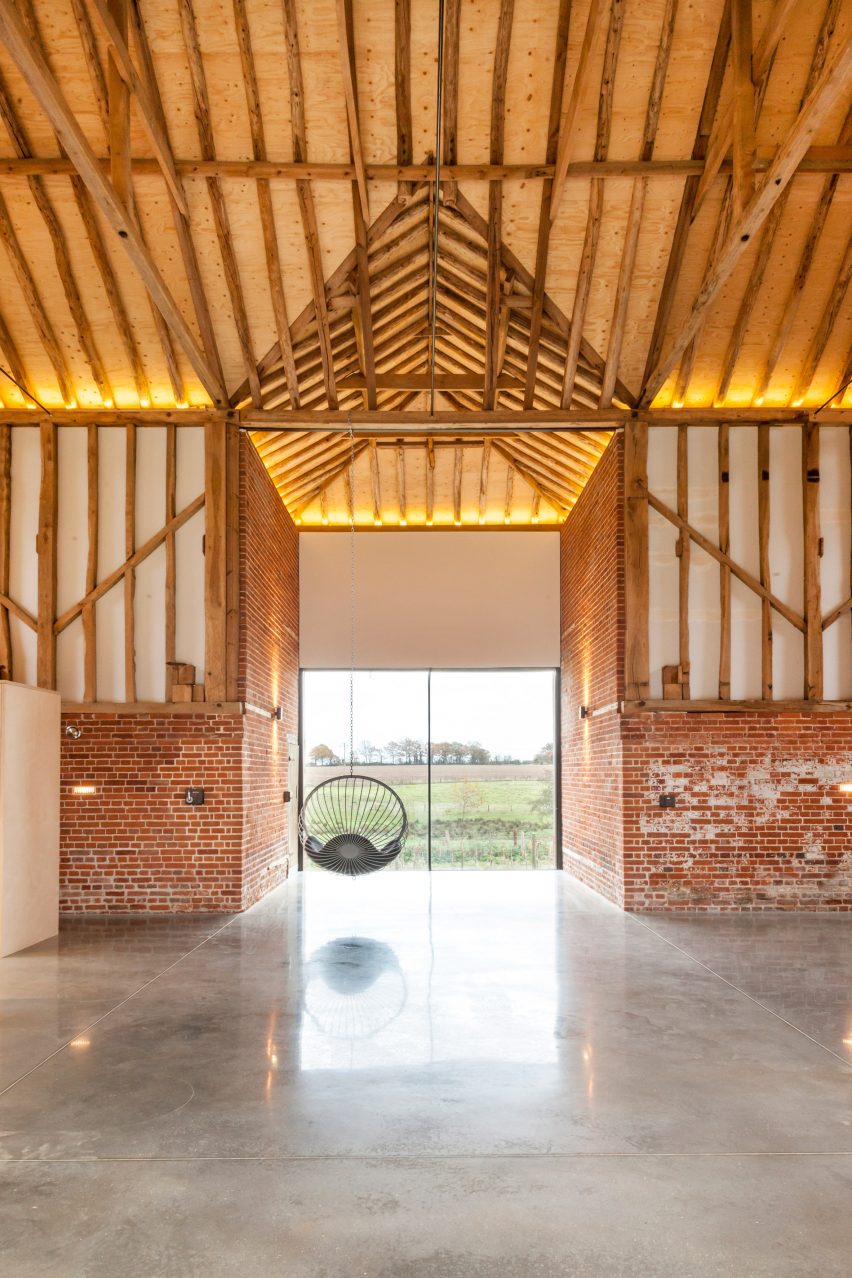
The building's cruciform plan was originally devised by a pioneer of experimental farming methods to provide shelter for a range of farming activities under a single roof, and as a result is heritage-listed.
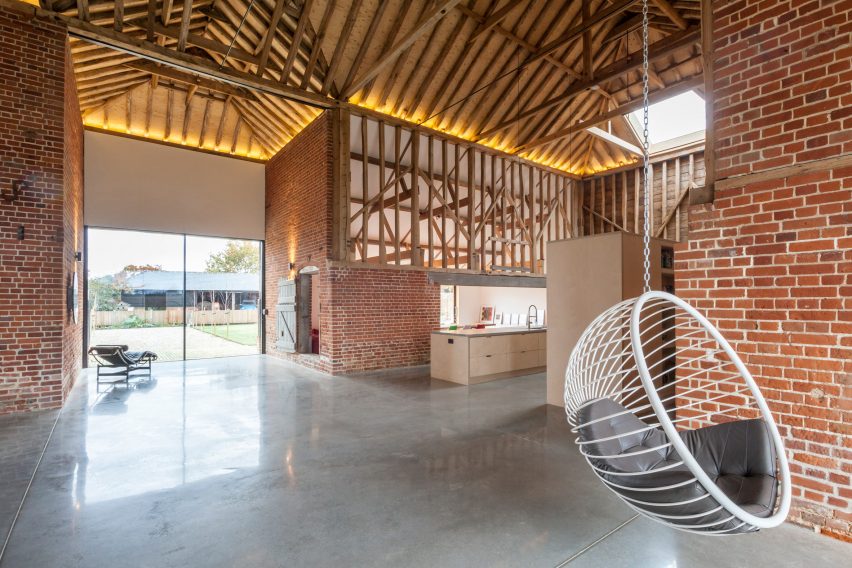
London studio David Nossiter Architects focused on preserving the materials that lend the barn its distinctive character, while introducing new features such as contemporary glazing and improved insulation.
A key aspect of the modernisation involved refurbishing the building's roof in such a way that the eight-metre-high trussed ceilings could remain on show without compromising the project's ecological credentials.
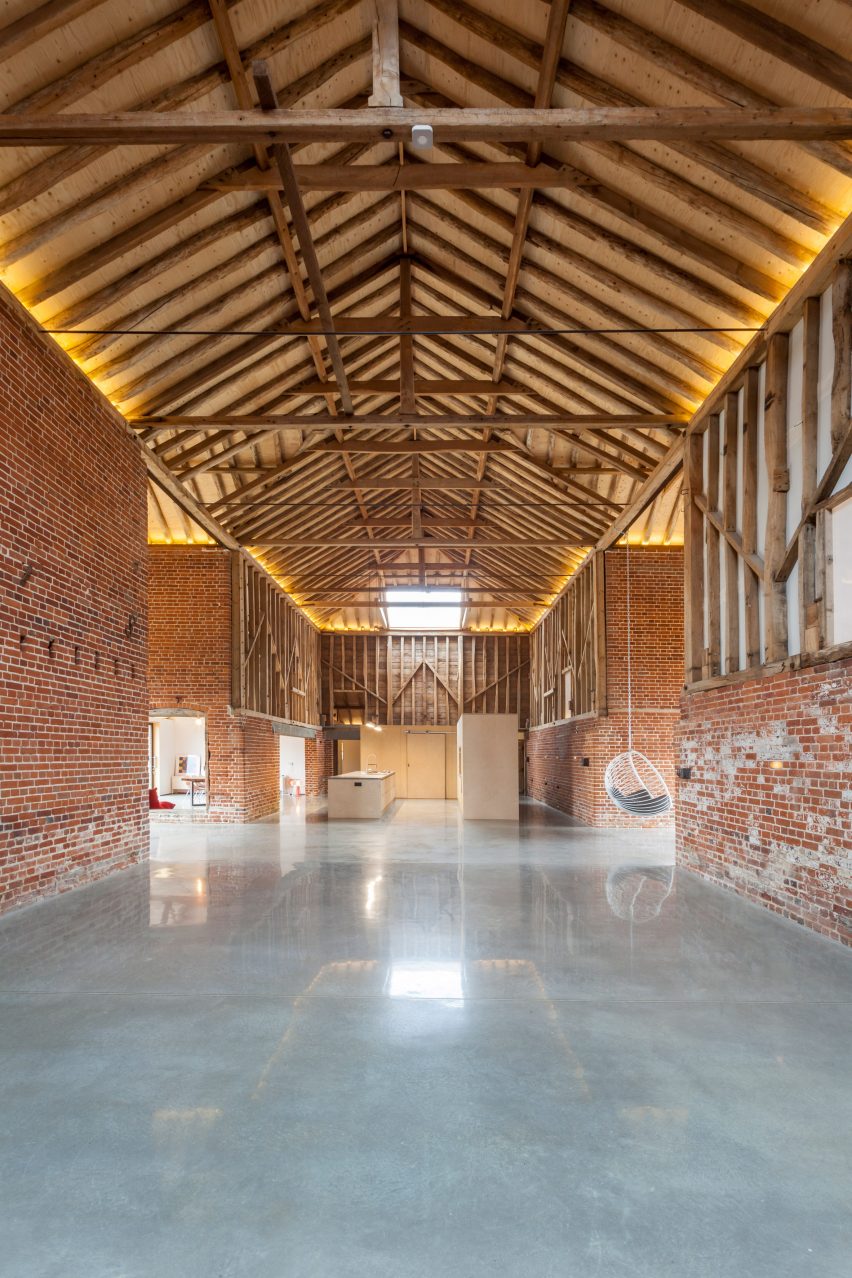
"In order to allow the existing structure to be viewed internally but still conform to modern standards of thermal performance, the roof is a warm roof construction," explained the architects, "meaning that all of the insulation is located on the exterior of the roof above a new timber deck."
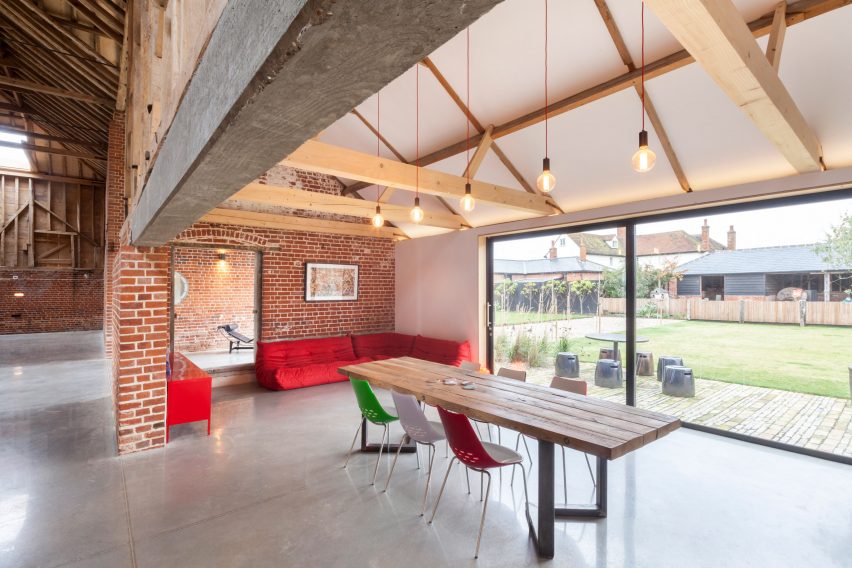
To maintain the building's familiar time-worn appearance, slates and timber salvaged from other outbuildings that were too damaged to be restored were used when resurfacing the roof.
Insulating the barn's external walls was also crucial to improving heat retention. This was achieved by adding panels of sheep's wool insulation clad with horizontal larch boards.
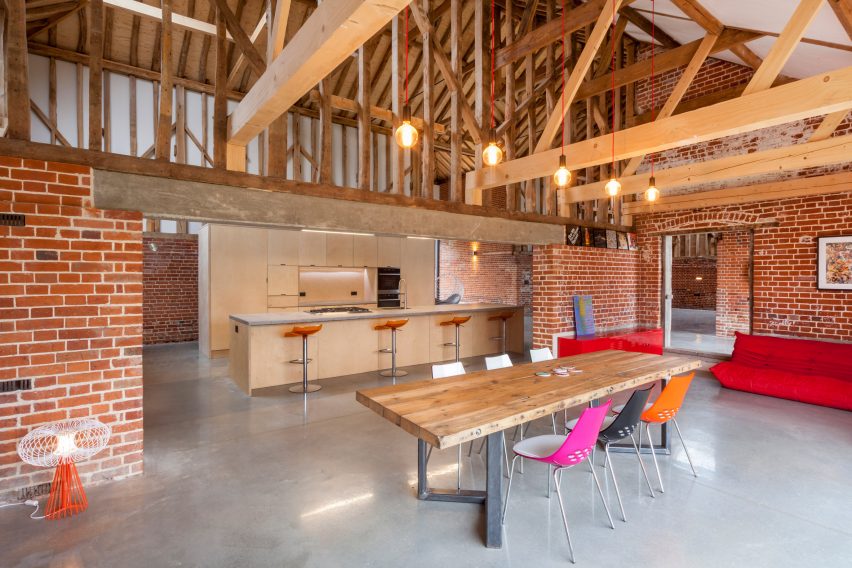
A biomass boiler used to heat the interior is supported by a mechanical ventilation and heat recovery system, which helps to circulate warm air that rises to the top of the high-ceilinged spaces.
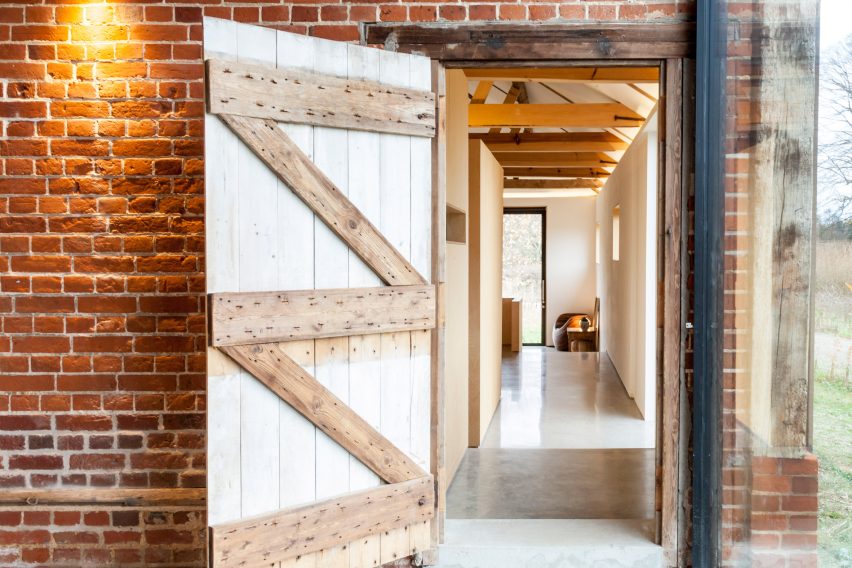
Original openings in the barn's facades are filled with glazing set back inside boxy wooden frames, including a set of sliding doors that connect the dining space with a terrace.
The hipped gable porches at the centre of the building now accommodate large glazed sliding doors that provide a view straight through from the entrance courtyard to the fields at the rear.
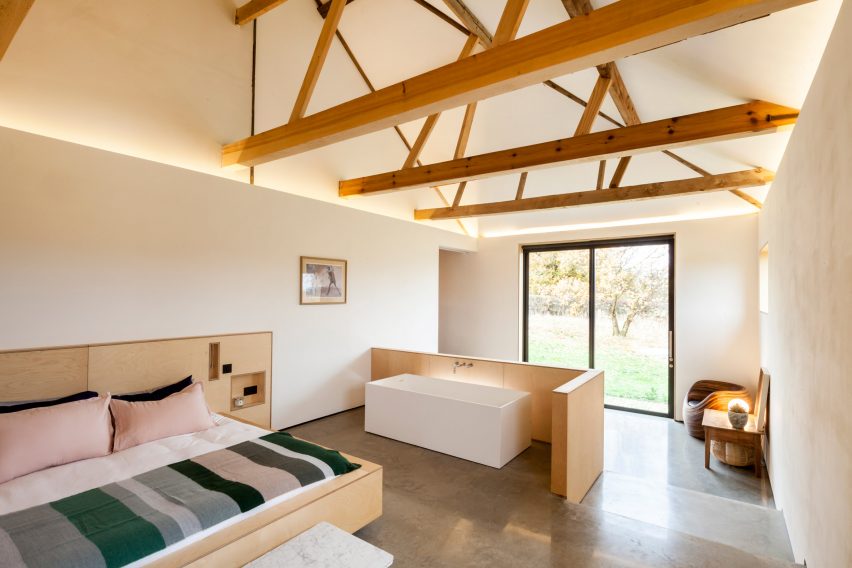
The interior has been kept largely open plan to enhance the building's impressive scale. Additions including the kitchen units, bedrooms and bathrooms are constructed from birch-faced plywood.
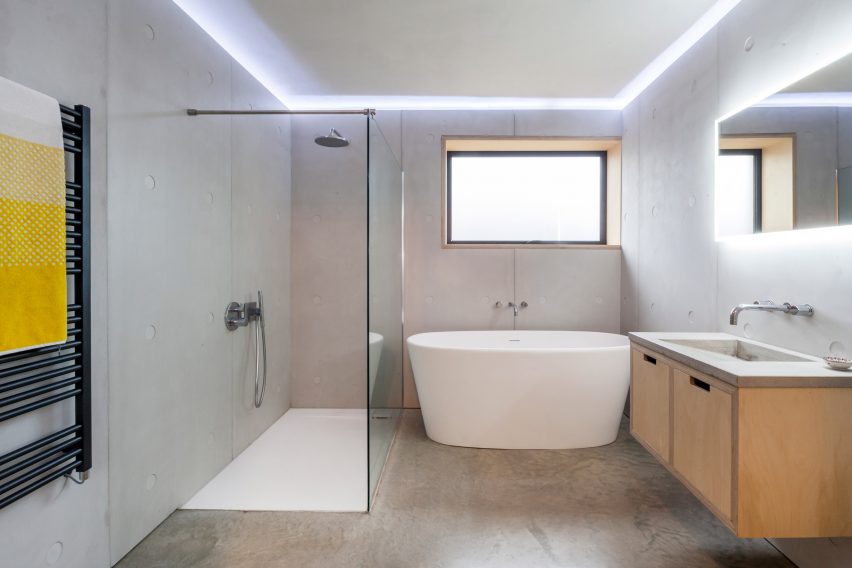
"It was decided early on during the design process to keep the spaces as open plan as possible," said the architects. "Where necessary, partitions and screens are designed as over-scaled freestanding furniture."
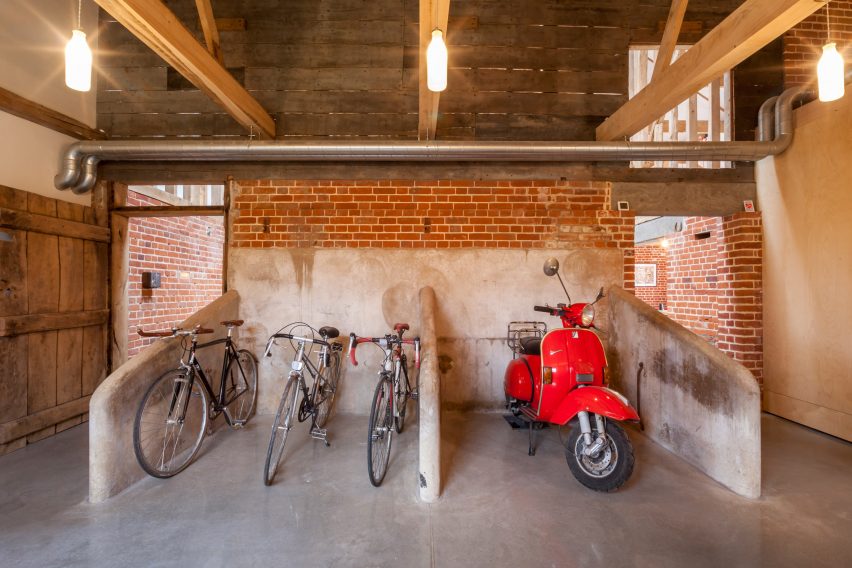
A smooth concrete floor employed throughout the spaces creates a consistent surface interrupted only by 10-millimetre seams that are positioned in alignment with the main spatial features.
The concrete has a polished finish that reflects some of the daylight entering through the windows and three large skylights set into the roof.
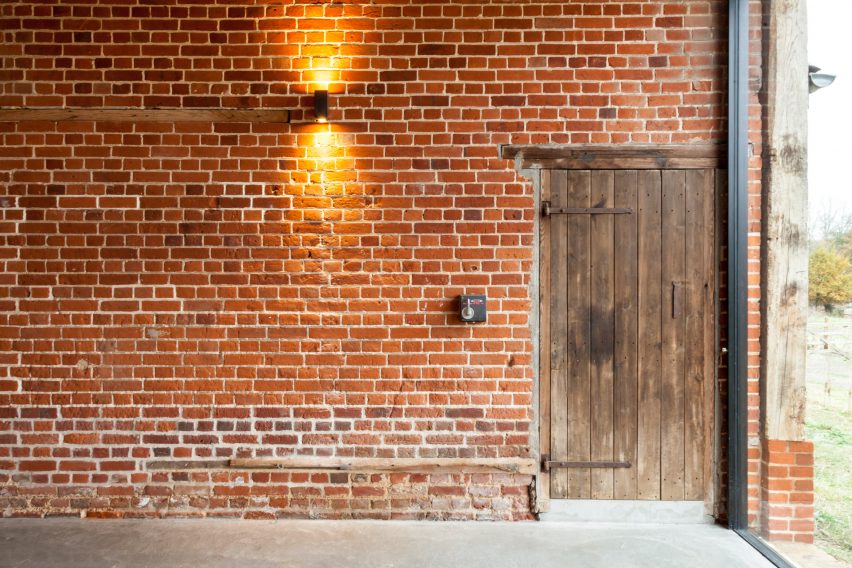
Existing switch boxes are used to operate the new lighting systems, which are integrated into and directed to illuminate the structure. In new parts of the interior, the lights are built into the joinery to achieve a similar effect.
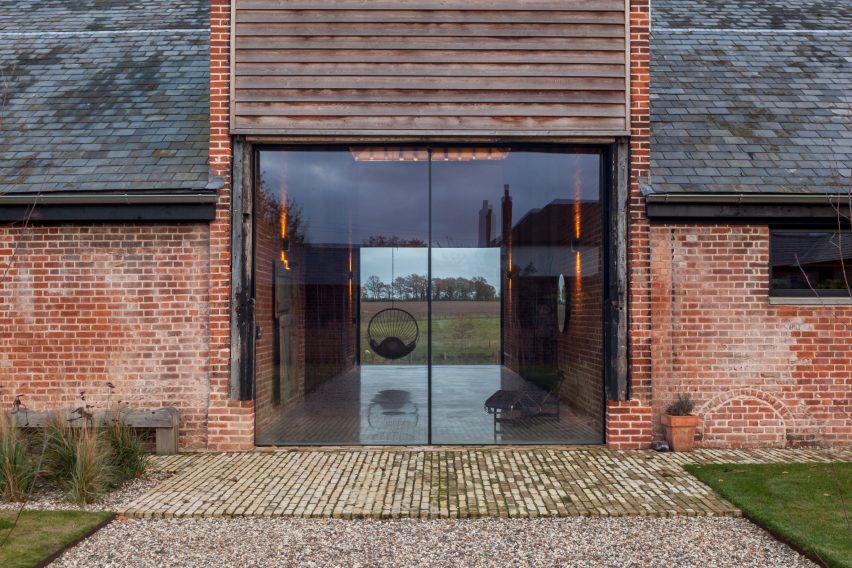
Another dilapidated barn in the English countryside was converted into a modern home with similarly chunky wooden trusses, exposed brickwork and a double-height kitchen by Snook Architects.
Photography is by Steve Lancefield.